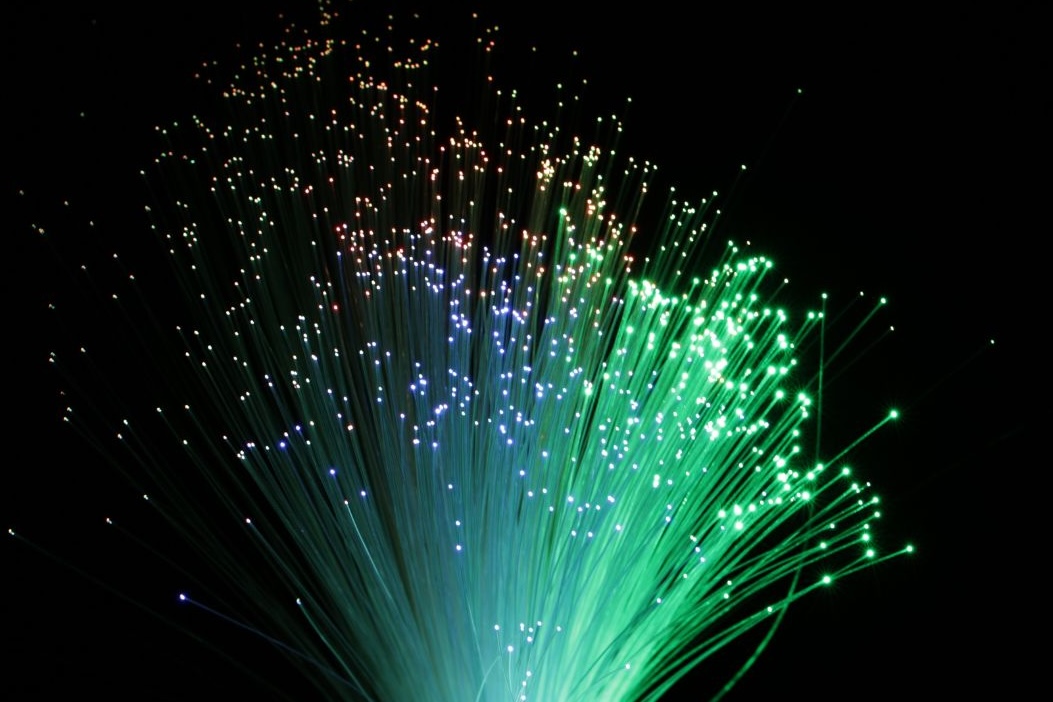Understanding fibre optic cable components is essential for industry professionals, technology enthusiasts, and students interested in networking and telecommunications.
Fibre optic cables play a huge role in modern telecommunications and data transfer, providing the backbone for high-speed internet and communication networks.
These cables use light to transmit data over long distances with minimal loss, making them better than traditional copper cables in many respects.
A basic fibre optic cable consists of several key components, each with a specific function.
These include the core, cladding, buffer coating, strength members, and the jacket.
In this article, we will explore each of these components, explaining their roles and significance in ensuring the optimal performance of fibre optic cables.
The Core
The core of a fibre optic cable is the central part where light transmission occurs. Its function is to guide light signals from one end of the cable to the other.
The materials used for the core are typically ultra-pure glass or plastic, chosen for their excellent optical clarity and minimal light absorption.
These materials provide efficient light transmission, which is essential for high-speed data transfer cables.
Core diameter is crucial because it affects the performance of the fibre optic cable. A larger core allows more light to pass through, which can be beneficial for certain applications.
However, a smaller core can reduce signal loss and improve the quality of the transmission over longer distances.
The relationship between the core and the cladding is also required; the cladding surrounds the core and has a lower refractive index, and light signals remain within the core through total internal reflection.
For more in-depth insights, check out these fibre optic statistics.
The Cladding
Cladding is the layer that surrounds the core of a fibre optic cable. Its primary role is to prevent light loss from the core by reflecting light into it.
This is achieved through the cladding’s lower refractive index compared to the core.
The materials used for cladding are typically similar to those used for the core but are doped with specific elements to alter their optical properties.
By improving light retention, cladding significantly boosts the efficiency of the cable, and makes sure that data is transmitted with minimal loss.
The process of integrating cladding with the core involves precise manufacturing techniques to maintain the necessary optical properties and consistent performance.
The Buffer Coating
The buffer coating is a protective layer that surrounds the cladding. Its purpose is to shield the core and cladding from physical damage and environmental factors such as moisture.
Common materials for buffer coatings include acrylate polymers, which offer flexibility and durability.
Buffer coatings are essential for maintaining the integrity of the fibre optic cable in various conditions.
They protect against mechanical damage during installation and use, and they also prevent moisture from penetrating the core and cladding, which could degrade performance.
Different types of buffer coatings are available, each suited to specific applications, from indoor to outdoor and even submarine cables.
Strength Members
Strength members are useful components of fibre optic cables, providing the necessary structural integrity.
They protect the cable from tensile stresses that can occur during installation and operation.
Common materials for strength members include Kevlar and fibreglass, known for their high tensile strength and durability.
Having these materials means that the cable can withstand pulling forces without breaking or stretching.
Strength members are typically arranged around the core and buffer coating, evenly distributing any mechanical stress and preventing damage to the optical fibres within.
The Jacket
The jacket is the outermost layer of a fibre optic cable, serving several functions.
It protects against environmental factors such as moisture, abrasion, and UV radiation. Common materials used for jackets include polyethene, polyvinyl chloride (PVC), and thermoplastic polyurethane (TPU).
Different environments require different jacket materials.
For example, outdoor cables often have jackets made from materials resistant to harsh weather conditions, while indoor cables may use more flexible materials.
The jacket also plays a role in cable identification and safety, often being colour-coded or printed with information to help with installation and maintenance.
Additional Components and Special Features
Fibre optic cables can include several additional components and features to improve their functionality and longevity.
Moisture Barrier
A moisture barrier is needed to prevent water damage to fibre optic cables.
Typically located beneath the jacket, it is made from materials such as aluminium or other metals that are impervious to water.
This barrier is especially needed in environments prone to moisture, such as underground or submarine installations, which allows the cable to remain dry and functional.
Armoured Layers
Armoured layers provide physical protection to fibre optic cables in harsh environments.
They consist of materials like steel or aluminium, which shield the cable from external forces such as crushing or rodent damage.
These layers are essential for cables used in industrial settings, where physical hazards are common.
Armour improves the cable’s durability and lifespan by protecting the internal components from mechanical damage.
Fire-Resistant Materials
Fire-resistant materials are for the safety of fibre optic cables, especially in buildings and other enclosed environments.
These materials, such as flame-retardant PVC, are designed to withstand high temperatures and prevent the spread of fire.
Cables with fire-resistant properties undergo rigorous testing and certification to meet safety standards. For more details on this topic, read about meeting fire regulations.
Understanding the components of a fibre optic cable is essential for maintaining its functionality and durability.
Each component, from the core to the jacket, plays a specific role in optimal performance.
When selecting or designing fibre optic systems, you need to consider these components and their characteristics.
Altimex offers a wealth of expertise and a range of products in the field of fibre optic technology.
For further information or specific inquiries, feel free to contact us.
Visit our website for more resources and insights into fibre optic technology.


